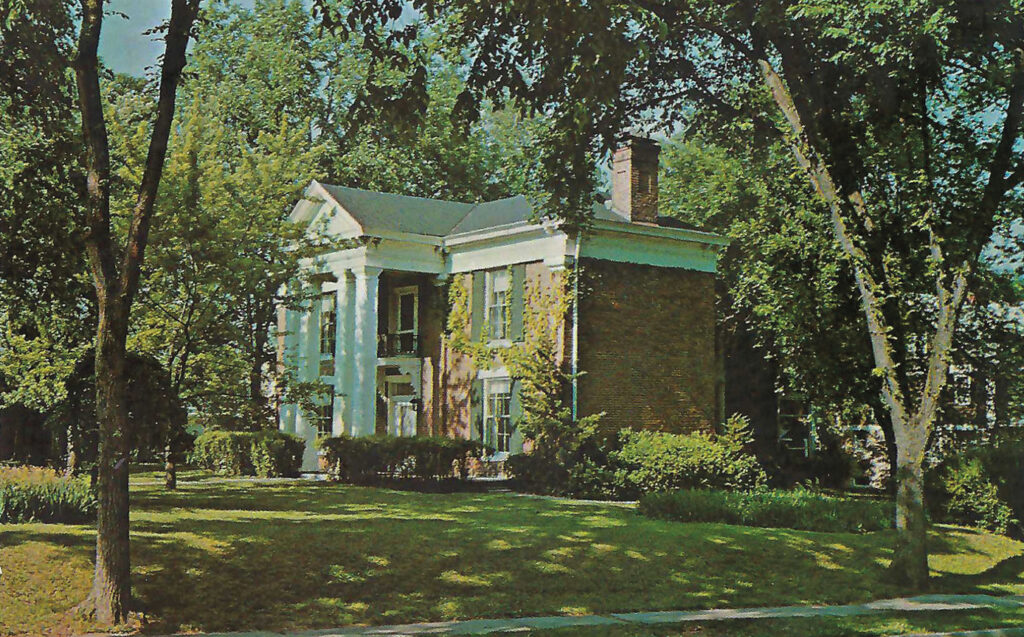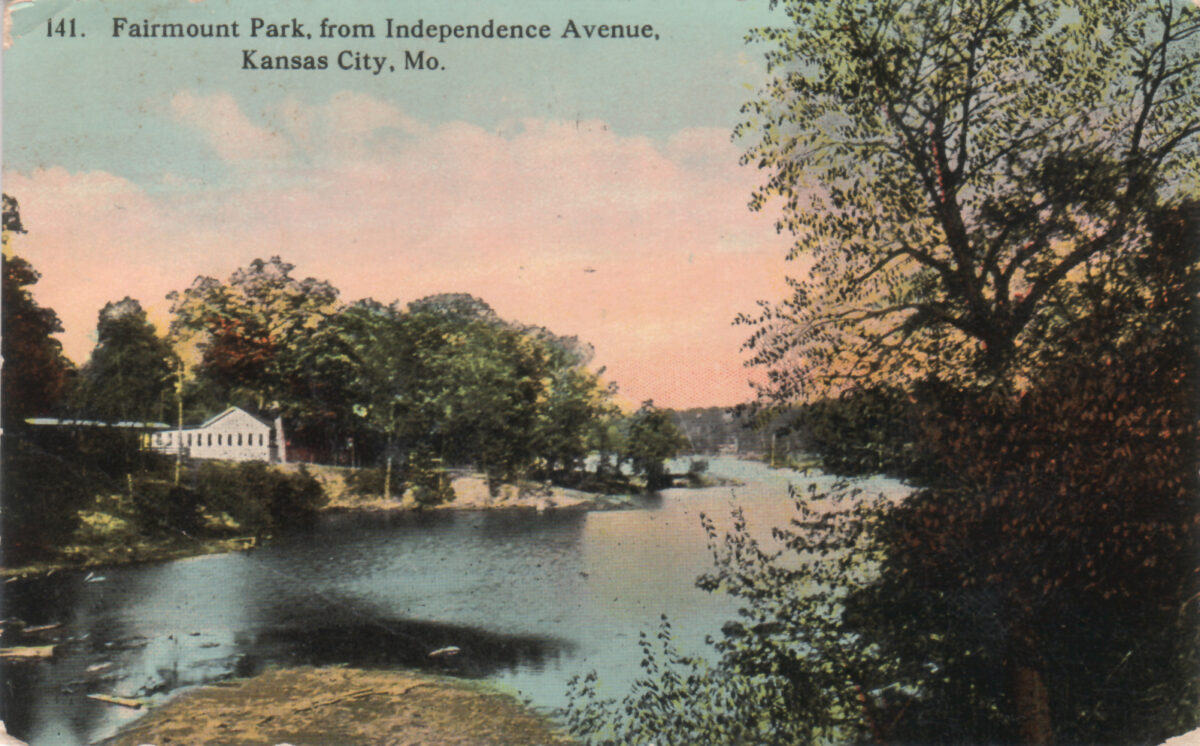
Michael Bushnell
Publisher
The description on the back of this Chrome style postcard published by James Tetrick, 619 W. 33rd street in Kansas City, Mo. in the late 1960’s reads: “The Wornall House is owned by the Jackson County Historical Society. Built by Mr. John B. Wornall in 1858 on a 500-acre tract in Western Missouri, it reflects Kentucky family traditions. The Wornall House survived two Civil War battles and Order No. 11.”
John Wornall purchased the land his homestead and farm sits on in 1843 after migrating from his native Kentucky. The family originally occupied a four-room cabin just west of what is now the main house. The Wornall farm ran from what is present day 59th Street south to 67th Street, bordered by the Kansas-Missouri State Line to the west and roughly Main Street to the east. The house faces west toward what was then the western frontier.
The house was built during the Border Wars Period that dominated day-to-day life in the region between roughly 1855 to the official onset of the Civil War in 1861. On numerous occasions guerilla fighters friendly with the Southern states and Kansas “Red Legs” sympathetic to Free State Kansas rode onto the Wornall property and threatened to kill the family and burn the house to the ground. This period, between 1854 and 1856 is referred to as “Bleeding Kansas” due to the violent confrontations in Kansas over the ideological debate over the legality of slavery in the Kansas Territory.
In 1863, just one month prior to the issuance of Union General Thomas Ewing’s General Order No. 11, the Seventh Kansas Cavalry, commanded by Colonel Charles “Doc” Jennison, occupied the house and grounds for a period of eight days. During this time, Jennison’s roughly 200 men burned fences, killed livestock, and destroyed crops. Jennison finally admitted after the eight-day siege that he had in fact come to kill Wornall because of his Southern sympathies. Finding no evidence to support his theory, Jennison and his men departed the farm, leaving almost $3,000 to cover damages to the farmstead.
The Wornall House is a prominent figure in George Caleb Bingham’s painting entitled Order No. 11.The painting depicts the issuance of the controversial order on the grounds of the Wornall farm. The front porch of the house can be seen in the background of the work. General Order No. 11 gave residents, regardless of loyalty, 15 days to evacuate their homes in a five county area in an attempt to quell the escalating violence along the border. So many houses and farms that existed in the region up to that point were torched by guerillas from both sides that the landscape resembled a vast graveyard with only the stone chimneys remaining of what was once a family home.
Following both Jennison’s occupation and the issuance of Order No. 11, on October 19, 20, and 21, 1864, the Battle of Westport raged around the farm and the stately home. During that battle the home was used as a field hospital by both the Confederate and Union Armies.
The home remained in the Wornall family until 1962 when John Wornall Jr. passed away. It was then purchased by the Jackson County Historical Society and in 1967 was remodeled in order to operate as a House Museum.
Ghostly images of Civil War soldiers are said to roam the halls of the homes, reticent of the Battle of Westport when the house was used as a field hospital. Visitors and staff at the museum tell of armed soldiers guarding doors in the house and figures in the windows. Others have reported the smell of pipe tobacco at times inside the house. The Wornall House offers ghost tours during the last three weekends of October. For more information, visit: http://www.wornallmajors.org/ghosttours.

















